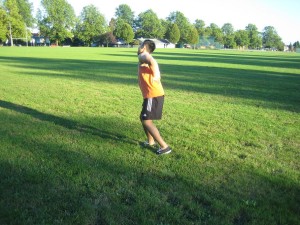Pinched spinal nerves can occur at any level of the spinal column starting from the neck up to the buttocks. The signs and symptoms of a pinched spinal nerve tend to vary depending on the degree of damage and location of the pinched nerve. A pinched spinal nerve in the neck can cause arm weakness while one in the lower back can cause sciatic pain. In some circumstances, the symptoms can be reversed once the nerve is released. On the other hand, some cases of pinched spinal nerves can cause permanent damage.
Disk issues
The intervertebral disks are small-sized cushions that rest in between the vertebrae or bones of the spine. Over time or after trauma, these disks start to show wear and tear, oftentimes causing them to become unstable. A herniated or bulging intervertebral disk can press into the space around the spinal cord, compressing the nerve roots as they exit the spinal cord.

The symptoms of a pinched spinal nerve can subside or worsen as the spine moves as the affected disk either decreases or increases the pressure.
Joint overuse
Constant strain is another common cause of pinched spinal nerves. The overuse of a joint or repetitive strain can lead to swelling in and around that joint. In case the swelling is severe or if it persists long enough, it can add pressure on the nerves. Remember that this is quite common in the peripheral areas of the body but can also occur in and around the spine. Over time, poor posture can lead to pinched spinal nerves.
Bone spurs
Certain joint conditions such as osteoporosis and arthritis can cause bony growths on the vertebral bones. These bone spurs can form within the spinal canal or in the holes where the spinal nerves pass into the body.
In case they form in the right place, they add pressure on the spinal nerves, resulting to pain. Some types of bone spurs can be removed via surgery to relieve the symptoms. On the other, there is possibility that they can grow back.
Ligament or bone damage
The ligaments and bones can cause pinched spinal nerves. Take note that the bones and ligaments can become damaged through injury or trauma. Fractures, torn or stretched ligaments and bone chips can occur. The pressure by the bone fragments or swelling linked with the damaged ligaments adds pressure on the nerve roots as they leave the spinal cord, thus resulting to the symptoms of a pinched spinal nerve. The symptoms usually subside once the damage is fixed and healing starts.
Diseases
It is also possible for certain diseases to cause tumors or abscesses. Once these growths develop in the spinal cavity or in the area surrounding the spine, they can increase the pressure on the spinal nerves. Take note that this type of pinched spinal nerve can include symptoms that gradually increase. Once the growth is removed, the symptoms subside.
